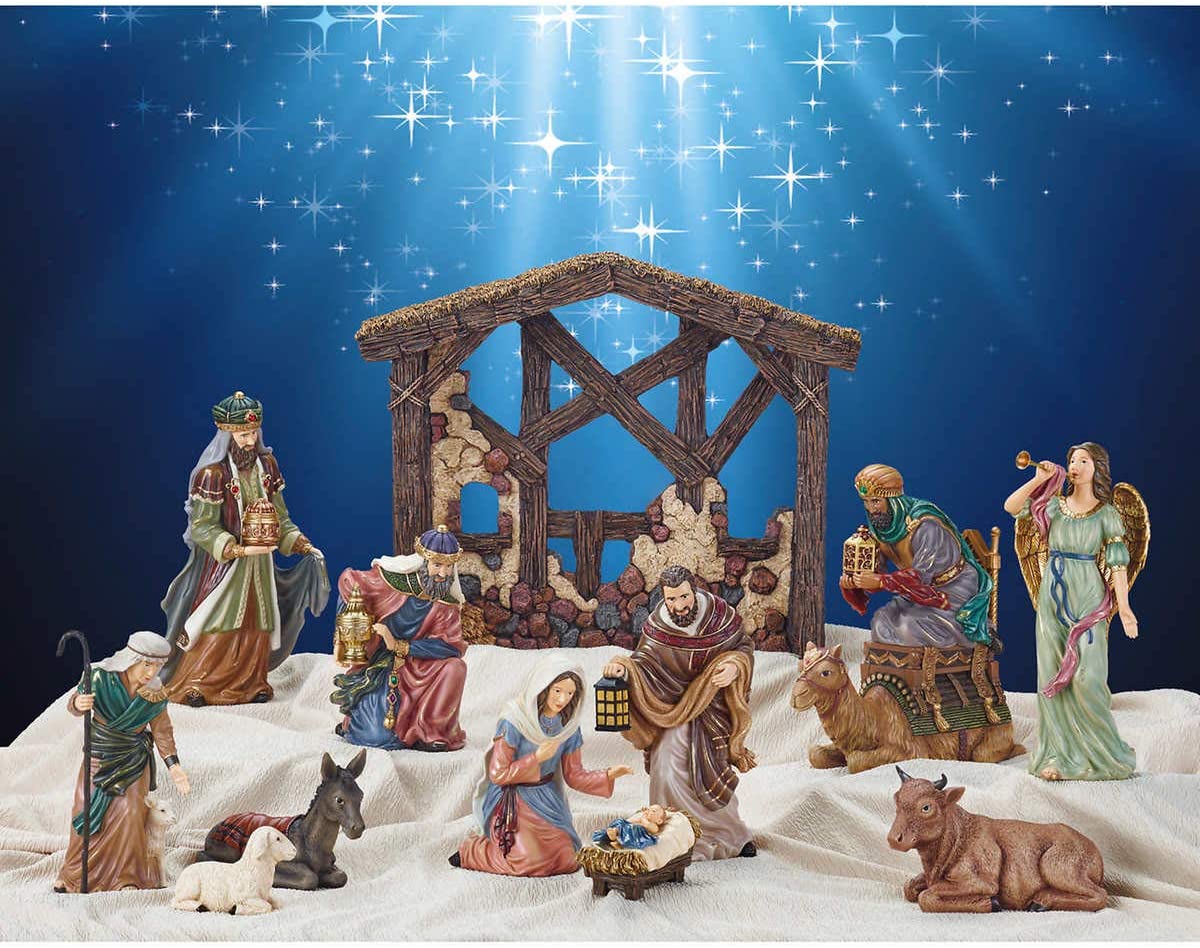No Nativity, No Eucharist

“The Eucharist involves more than receiving; it also involves satisfying the hunger of Christ.
He says ‘Come to me’. He is hungry for souls.
Nowhere does the Gospel say: ‘Go away’ but always ‘come to me.’”
(Mother Teresa)
For Christians, Christmas is the highlight of the year. It is a moment of great significance as we come together to celebrate the joy of ‘God-with-us’ in the birth of our infant Saviour, Jesus Christ. The crib, the decorations and carols ringing in our ears remind us of what a special time this is.
We remember that in Bethlehem a child was born who revealed God to us in the endearing presence of an infant.
I n his Christmas narrative of the birth of Jesus, Luke also stresses the importance of the Eucharist which is woven into the fabric of his Gospel from beginning to the end. He inserts what seems to be a curious detail into the Nativity story to make his point:
Mary ‘gave birth to her first-born son… and laid him in a manger’ (Luke 2:7).
We know that when Jesus was born, his mother had to lay him in a manger because when Mary and Joseph arrived in Bethlehem, there was ‘no room for them at the inn’ forcing them to take shelter in a humble stable.
Mangers were located wherever livestock was stored; places such as stables for example. Farmers kept their stables well-stocke4d at all times, so their animals never went hungry. The manger is a simple feeding trough where the animals of the nativity scene fed.
Yet, we believe, it held the same body of the infant child, the bread of life that feeds us in the sacrament of the Eucharist today. The manger is a momentous sign that Jesus is our sustenance.
Jesus was not laid in a manger by accident. This is an important spiritual symbol. As animals went to the manger for nourishing food; so, we too go to the ‘manger’ for our spiritual food. He feeds us with Word and Sacrament, his Gospel and the Eucharist. Jesus’ Word is like no other food; it has the power to save our souls.
Not only that, the infant lying in the manger is the Bread of Life (John 6: 51), the true bread come down from heaven. If we want to be spiritually nourished, then it is important for us to read Scripture and receive the Eucharist often.
After Jesus’ birth, an angel told, not the important and powerful in the land but the shepherds, that they would find their newborn Messiah lying in a manger (Luke 2:12). The message of the angel on that Christmas night to the shepherds is meant for all of us: ‘To you is born this day in the City of David, a Saviour who is Christ the Lord.’
The shepherds are representative of people everywhere, and as the animals approached the manger for food, these simple shepherds also approached to feast their eyes upon the newly born infant who would be the one to feed their souls, and ours both with the Eucharist and His Word.
It is important for us to realize that the Nativity scene is not meant merely for pious contemplation. It contains a special message. God had become a human person like us and he had come to live and work among us.
In becoming incarnate, God has crossed the boundary into our world. As the shepherds hurried to the manger to see this newborn baby, we too must also welcome the newborn Christ-child into our lives.
Where do we find this newborn Saviour today? We find him spiritually, not only where there is love and peace in our world, but also in the suffering of the poor, the homeless, the abused and refugees, i.e. everywhere, but most importantly, we meet him personally, ever present in the Eucharist.
We know that the open arms of the baby lying in the crib are open for all of us and for all those whom we love – open to forgive us, open to comfort us, open to embrace us in the open most loving way.
As we face the many challenges that lie ahead for the Church and our world, we remember that our greatest hope is in our communion with Jesus and with one another in prayer, in reflection on God’s Word, in participation in the Eucharist and in our shared mission to bring the Good News to the world.
This Good News as the Christmas story reminds us, is ‘news of great joy that will be for all people’ (Luke 2: 10).
May our prayer be that this joy will touch the heart of all this Christmas and strengthen our hope in these and future challenging times.
A happy and very blessed Christmas to all.




Bernice Dookhan-Khan
Posted at 09:38h, 18 DecemberThanks for such a beautiful sharing and significant meaning of the nativity relevant to the eucharist.
God bless.
Tom
Posted at 10:04h, 18 DecemberGreat reflection!
Rosella Kinoshameg
Posted at 10:20h, 18 DecemberVery good reflective thoughts to ponder and feast on.